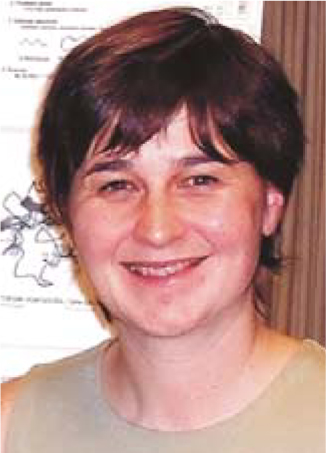ACA heads to Honolulu
DOI: 10.1063/1.2337828
Organizers of the American Crystallographic Association’s annual meeting expect that several new programs on the bill and an exotic locale will translate into high attendance numbers this year.
The 2006 meeting runs Saturday, 22 July through Friday, 28 July at the Sheraton Waikiki Beach Hotel in Honolulu, Hawaii, and at press time, about 600 attendees had registered with more expected, according to program chair Judith A. Kelly. Among the new offerings this year are a showcase for undergraduate student research and a special-interest-group session aimed at those working in the industrial sector. Other highlights include a three-part session on supramolecular chemistry and a daylong symposium on the future of neutron crystallography.
Kicking the meeting off are three workshops at 8:30am Saturday on neutron protein crystallography, management of synchrotron image data, and grazing-incidence small-angle scattering. The main conference program runs from Sunday, 23 July through Thursday, 27 July, and covers a variety of topics including whole molecule disorder, structural genomics, natural products and drugs, time-dependent investigations, computational methods, and radiation damage. The 37-vendor exhibition begins at 7:30pm Saturday in conjunction with the meeting’s opening reception in the Sheraton Hotel ballroom, and continues through Wednesday, 26 July.
The three-part session, “Supramolecular Chemistry: From Assembly to Structure and Function,” has generated a great deal of interest and some 250 papers, more than any other topic of the meeting. Recent research results have allowed experimenters to control stereoselectivity and rate enhancement, among other factors, Kelly said. The talks are on Tuesday, 25 July, from 1:30 to 5:00pm and on Wednesday, 26 July, from 8:30am to noon and from 1:30 to 5:00pm.
The industry group session—one of 12 programs aimed at ACA’s different special-interest groups—will run from 8:30am to noon Monday, 24 July. The group was recently formed to meet the needs of increasing numbers of ACA members who work in industry rather than in academia. Industrial attendees working at biotech firms and large pharmaceutical companies will be interested in the research results on small molecules, enzymes, and ligands presented at the session.
Scheduled for 8:30am to 5:00pm Monday, 24 July, the Transactions Symposium, whose topic is “The Future of Neutron Crystallography: Smaller Crystals, Larger (Macro) Molecules,” will examine neutron diffraction and its uses in studying biological macromolecules and small molecules, and new developments in neutron techniques and instrumentation.
Three other symposia will honor ACA award recipients. The Margaret C. Etter Early Career Award is going to Carrie Wilmot, assistant professor in the biochemistry, molecular biology, and biophysics department at the University of Minnesota in Minneapolis, for her “outstanding achievement and exceptional potential in crystallographic research.” Wilmot will receive the award at a symposium Wednesday, 26 July at 1:30pm, when she will discuss crystalline enzymology and her efforts to produce movies of enzymatically catalyzed reactions.
An award symposium titled “Structural Biology from All Angles” will be held Sunday afternoon, 23 July, when the 2006 Martin J. Buerger Award will be conferred on Helen M. Berman. Another, “Development of Neutron Reflectometry and Its Applications to Magnetism, Soft Matter, and Biology,” takes place Tuesday afternoon, 25 July, when the 2006 Bertram E. Warren Diffraction Physics Award will be given to Charles F. Majkrzak. (See Physics Today, November 2005, page 68
The student research showcase, sponsored by the American Institute of Physics, is slated for Sunday from 1:30 to 5:00pm and features both oral and poster presentations by students and mentors. Kelly said undergraduate students rarely get a chance to present their research results in such a forum. AIP will award prizes for the most outstanding poster and presentation. “This is a nice way to reward the [students] as well as the faculty members who take them on,” Kelly said. “It’s priming the pump for the next generation of crystallographers.”
Poster sessions will run Sunday, Monday, and Tuesday evenings; the annual banquet and awards ceremony on Wednesday begins with a reception at 6:30pm at the Royal Hawaiian Hotel. At the ceremony, the winners of seven poster prizes—the 2006 International Union of Crystallography prize, Journal of Chemical Crystallography prize, Journal of Crystal Growth & Design prize, Protein Data Bank prize, Oxford Cryosystems Low Temperature prize, Pauling prize, and AIP’s Undergraduate Research Poster prize—will be announced, and Louis Delbaere will give the past president’s address.
Young scientists will have a chance to learn from veterans at a mentor/mentee mixer Sunday evening on Diamond Head Lawn at the Sheraton and a mentor/mentee dinner Monday evening at a nearby restaurant. Other events include a Rigaku Corp/Molecular Structure Corp lunch Sunday afternoon, a meeting for all attendees on topics of general interest Monday afternoon, and a Polynesian Cultural Center trip Friday, 28 July.
For additional information about the conference, visit the website at http://www.xray.chem.ufl.edu/aca2006/index.html

Wilmot





